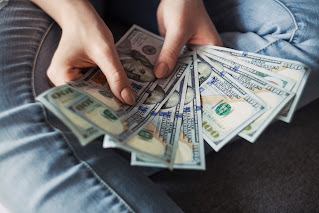How To Make An NFT And Sell It
What is an NFT
NFT is a non-fungible token, which means is one-of-a-kind and cannot be substituted with another. A bitcoin, for example, is fungible, meaning you can exchange one for another and get precisely the identical thing. A one-of-a-kind trade card, on the other hand, cannot be duplicated. You'd get something altogether different if you swapped it for a different card.
.jpg) |
That's all there is to it. That's the whole purpose of an NFT: in terms of what it is, what it does, and how it's manufactured, it's similar to any other piece of art. It isn't a cryptocurrency in and of itself. It's a token that's made in the same way as any other piece of art. As a result, it can be purchased separately or as part of a mixed-media installation or another project. NFTs are simply one-of-a-kind artwork created with one-of-a-kind components and images. It is, after all, a work of art that can be purchased and sold on the Blockchain.
In 2022, NFTs will become mainstream. According to Goldman Sachs analysts, the market volume in October 2021 will be worth $17 billion. It was just roughly $340 million in 2020, according to the market research website Nonfungible.com.
NFT technology is expected to reach its pinnacle in 2022, according to some analysts. Other voices, on the other hand, are quite skeptical of the topic, believing it to be a massive speculative bubble. As a result, both buyers and sellers should be aware of the dangers of investing in NFTs. If the buzz fades and demand declines, the NFT's value can plummet quickly, posing a danger of total loss in the worst-case scenario. NFTs are usually of no practical utility, but they are only useful as long as others see them as valuable. NFTs, on the other hand, bring up a whole new asset class and, with it, great prospects for investors. As a result, NFTs based on blockchain technology is becoming increasingly appealing to artists. But how do you make your own NFT and sell it?
How to create NFTS
You must first choose a free NFT marketplace where you can create your NFT. A crypto wallet will also be required to pay fees and collect payments when your NFT is sold.
Many specialized platforms allow you to create and trade NFTs. We'll go over the two most popular NFT trading platforms, OpenSea and Raible. In terms of crypto wallets, these sites support a variety of wallets, but we'll utilize MetaMask because it's one of the most popular among crypto users.
However, one of the most essential features of these well-known NFT marketplaces is that they allow NFTs to be minted for free, but charge a 2.5 percent service fee (of the selling price) for each NFT displayed. This is a platform fee, not a fee to the blockchain network.
Furthermore, An NFT can be made and sold by anyone. It is not necessary to have a reputation as an artist, having said that to have a unique NFT that stands out in the marketplace you need to contact an expert in NFTS and NFTS and animation.However, in order to generate and sell your own NFTs, you must meet certain standards. You must have ownership rights to the artwork you plan to sell in the form of an NFT as one of the requirements. Buyers might otherwise be misled. The NFT portals, on the other hand, will almost never verify this, if only because the control would be extremely time-consuming.
Now to list the artwork for sale, the artist must first choose a marketplace where the artwork will be transformed into an NFT. This method is often referred to as "embossing" or "minting." It is difficult to modify the file recorded on the blockchain once the NFT has been minted. This ensures that the appropriate NFT object is unique and immutable.
After that, the file is uploaded to the platform. The artist provides more information about the object to interested buyers, similar to a profile. The NFT requires a description in addition to a name. There, for example, the history of the NFT or what makes the NFT unique might be discussed.
You must actively offer your NFT for sale using the "Sell" button in order for it to be displayed to potential purchasers. The next step is to decide which crypto coin you'll take as payment and whether you'll sell your NFT at a predetermined price or through an auction. If you prefer to sell through an auction, you must first set a minimum bid. The NFT will not be sold for less than this price. This is also where the proportion that the artist receives when the NFT changes hands is established. Offers for your NFT are now being accepted by potential purchasers.
In a word, NFT
1 Make your own art and digitize it.
2 Create an Ethereum wallet from scratch or utilize one that already exists.
3 Purchase Ethereum and place it in your Ethereum wallet.
4 Make an NFT.
5 To sell the NFT art, choose an appropriate marketplace.
6 List NFT for sale and wait for offers or possible purchasers.
Where can I see NFTS?
You'll need access to a suitable platform if you wish to sell your own non-fungible token. The following are some of the most well-known and user-friendly markets where you can sell your self-made NFTs:
- opensea
- Rarible
- Mintable
- super rare
- NOTE; On the Super Rare trading platform, unlike the other NFT marketplaces listed above, not just anyone can offer NFTs. Artists must apply here first, and a jury will determine which artists will be whitelisted and permitted to sell their work on the platform. This limits the offer while increasing the NFTs' exclusivity.

How To Make An NFT And Sell It

.png)

Comments
Post a Comment